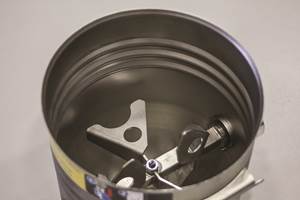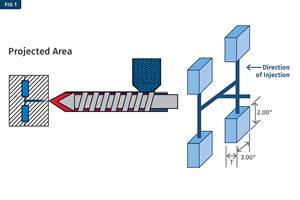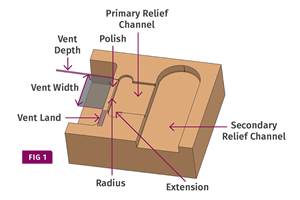Molder Cuts Post-Purge Costs and Downtime in Half
By switching to a new purging compound, IMCO now can complete a changeover in 10 min.
Plastics processors are always looking for ways to make purging more efficient and less costly. Even when a solution seems to be working well, something new may come along that changes their standards of performance. That was the case with in Rochester, N.Y., a custom injection molder of a broad array of products, among which are clear polycarbonate lenses and window-track components made with black 33% glass-reinforced nylon 6. The company operates 22 molding presses from 40 tons to 720 tons in its 28,500-ft2 plant.
Maintenance manager Todd France says the company had been using the second generation of Dyna-Purge M purging compound, introduced in 2011 by . France considered that product quite effective, but when their Dyna-Purge representative gave them a sample for testing of the new Dyna-Purge D2 launched last year, France reports “it cut our post purge costs and downtime in half”
Both are non-abrasive, mechanical, thermoplastic-based compounds. However, D2 is said to be based on a unique technology that scrubs, cleans, and removes contamination without leaving residue. It contains one proprietary component that contributes high-shear tolerance, creating a more viscous flow to the boundary layers, while another ingredient acts as a pressurizing agent allowing for the purge to reach into flow-stagnation points. In addition, encapsulated fine particles target degraded material adhering to the surface of machine components.
This dynamic “triple-action” innovation is said to thoroughly clean and remove material from the screw and barrel as well as the tool or die. It can be used for purging all types of resins, and its wider temperature range of 350-625 F is suited for use in injection molding, extrusion, compounding, and blow molding.
IMCO purges its equipment up to four times/week for color changes or whenever there is any question of possible contamination, according to France. IMCO often uses some of the more hard-to-purge resins, such as nylon, PP, PET, and polyetherimide (PEI). By switching to the D2 purging compound, IMCO now can complete a changeover in 10 min. The company has also reduced scrap by 50% while transitioning to the next production resin.
France says the D2 compound generates a lot less odor and smoke and is particularly easy to use. He has found it even more effective if it is loaded into the screw and barrel and left to “cook” for about 8 min. “It seems to expand in that short time, before I hit purge. Afterwards, you can get it off the screw simply with an air nozzle. It falls right off, eliminating about five steps you’d need with a purging compound that is stuck on the screw.”
France says he typically uses less than 1 lb of this purging compound for IMCO’s 80-ton machines and 5-10 lb for the 720-tonner. Referring to his experience with other purging compounds, he adds, “I don’t want to be spending 4 hr on any one machine. The reduction in downtime means we can up our production.”
An independent study conducted last year by the University of Akron’s Institute of Polymer Science and Polymer Engineering in Akron, Ohio, compared the most widely used commercial purging compounds. Trials were conducted on a 55-ton Van Dorn injection machine using PP, ABS, and nylon 66.
Results showed Dyna-Purge D2 to be more effective than chemical or abrasive-type mechanical purging compounds, resulting in faster cleaning and less downtime. It was also the only purging compound that, for each of the three resins, after 150 g of purge, both the purge compound and the post-purge resin were clean and free of contamination.
Related Content
Polyethylene Fundamentals – Part 4: Failed HDPE Case Study
Injection molders of small fuel tanks learned the hard way that a very small difference in density — 0.6% — could make a large difference in PE stress-crack resistance.
Read MoreFive Quick Steps Toward Better Blending
Rising costs of resins and additives, along with higher demands for quality and use of regrind, place a premium on proficient blending. Here are some steps to get you there.
Read MoreIs There a More Accurate Means to Calculate Tonnage?
Molders have long used the projected area of the parts and runner to guesstimate how much tonnage is required to mold a part without flash, but there’s a more precise methodology.
Read MoreBack to Basics on Mold Venting (Part 2: Shape, Dimensions, Details)
Here’s how to get the most out of your stationary mold vents.
Read MoreRead Next
See Recyclers Close the Loop on Trade Show Production Scrap at NPE2024
A collaboration between show organizer PLASTICS, recycler CPR and size reduction experts WEIMA and Conair recovered and recycled all production scrap at NPE2024.
Read MoreBeyond Prototypes: 8 Ways the Plastics Industry Is Using 3D Printing
Plastics processors are finding applications for 3D printing around the plant and across the supply chain. Here are 8 examples to look for at NPE2024.
Read More










